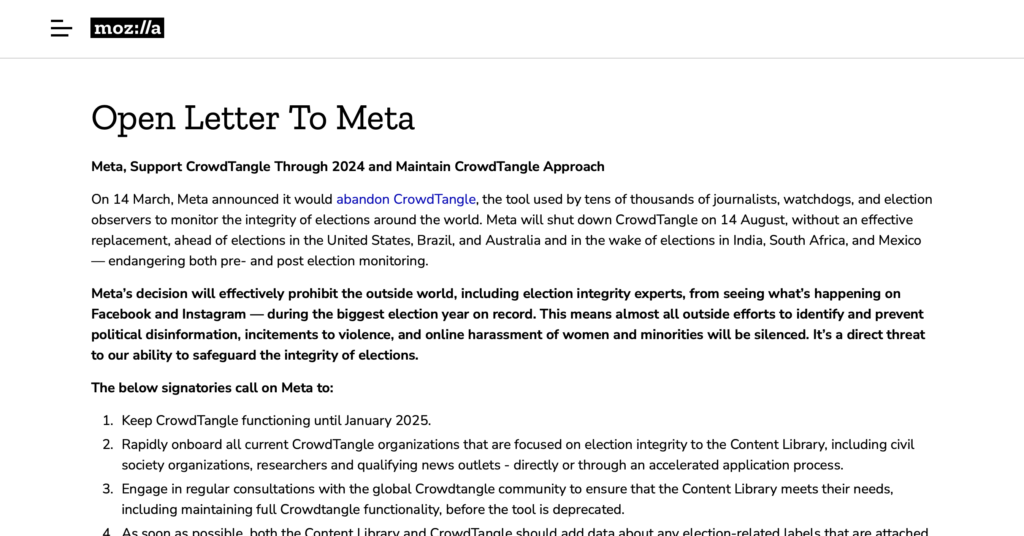Finding Out When to Vote is Harder Than You Think
Millions of voters across 16 states and territories voted yesterday. Well actually, Super Tuesday voting started months ago for military/overseas voters, weeks ago for vote-at-home/absentee voters, and days ago for in-person in certain states. That begs the question: how do you find out when to vote? The average voter is probably going to shout at their voice assistant or type in their web browser “When do I vote?” and trust that the results are accurate and up-to-date. But are people actually verifying that information? Google surfaces helpful knowledge panels and related questions to provide context to results. On the other hand, voice assistants offer a brief reply or an unhelpful suggestion to go search the web. Voters should be able to readily find authoritative sources of election information.
Finding accurate and up-to-date election information is sometimes harder than you would think. For example, a DC voter looking for Primary Election Day information may have searched Google in early January. The results would have been incorrect because the DC Board of Elections changed the Primary Election Day during a December meeting and posted the results in a pdf file. It wasn’t until weeks later that the website was updated to reflect the change to June 2nd. Another example would be a journalist covering races in multiple states. They may look to the Election Assistance Commission (EAC) to find key dates in those states. Unfortunately, the EAC website is manually updated based on the state election officials’ website. The last update to the EAC website was June 6, 2019. A number of the dates are incorrect and some of the links are broken. I know because I checked every. single. state. website. But how does Google know when Election Day or voting laws change?
Finding accurate information can be tough because government websites typically rely on a single design to serve multiple audiences. In the case of elections, voters, candidates, and journalists are probably looking at the websites at different times, with different frequency, and for different information. Some states like New Mexico and Pennsylvania have easy-to-find links and simplified views of their election information. New York goes a step further by offering links to detailed calendars for candidates in addition to a simplified view for voters. West Virginia makes it easy for voters by having a live countdown timer right at the top of the page.
Other states have room for improvement. New Jersey’s website is designed with election officials and candidates in mind; it requires visitors to download pdf file and wade through a multi-page timeline of notices and filing deadline (Primary Election Day appears on the bottom of page 5). Montana takes a similar approach but at least offers a 12-month calendar with the election dates circle in red at the top of the page. Rhode Island changed its web address, but its old address (still listed on the EAC website) returns an error rather than redirect to the new address.
What should people do? I recommend starting with the National Association of Secretaries of State (NASS). As part of its #TrustedInfo2020 campaign, NASS created the canivote.org website to help eligible voters figure out how and where to go vote. Redesigning websites for specific audiences can greatly reduce the time and effort required to find election information. Consider tailoring sections of the websites for voters, candidates, journalists, and even machines. That last audience may be the most important because so many people rely on search engines and voice assistants for information. Machine-parsable data formats presented in a logical structure on a .gov domain is the ideal way to make it easier for data aggregators (like search engines) and users with accessibility needs or on any digital platform to find, use, and share accurate election information from an authoritative source.
Credible sources like Real Clear Politics and the New York Times present election dates in a number of formats designed to be viewed in web browsers. That may not work for some people because it is out of context with where they normally look at dates: in their own calendar.
Authoritative sources of election information should consider how they can present accurate data to different audiences in order to reduce the time and effort required to find, use, and share that information.
With that in mind, CDT has created a shareable Google calendar of 2020 US Elections. This calendar allows anyone to subscribe and put the election dates right in their own calendar next to meetings, birthdays, and date night. This is an example of making the data available in a format to meet the needs of different users.
Add 2020 Election Dates to Your Calendar
Don’t want to add the calendar above to your device? Well, the table below is a look below at the information we have on who votes on which date, and where that info can be verified.
Note: We spent a lot of time and effort verifying the info in the calendar and the table below. If you notice a mistake, we would love for you to share it with us. We’re going to keep this as up-to-date as possible, while recognizing that in the current state of communicating voting information, that can be a herculean task at best.
You can help us verify at https://www.canivote.org. #TrustedInfo2020
| Election | Date |
| Alaska Democratic Caucus | 4/4/20 |
| Alaska Primary | 8/18/20 |
| American Samoa Democratic Caucus | 3/3/20 |
| American Samoa Republican Caucus | 3/24/20 |
| Arizona Presidential Primary | 3/17/20 |
| Arizona Primary | 8/4/20 |
| Arkansas Presidential Primary | 3/3/20 |
| Arkansas Primary | 3/31/20 |
| California Primary | 3/3/20 |
| Colorado Presidential Primary | 3/3/20 |
| Colorado Primary | 6/30/20 |
| Connecticut Presidential Primary | 4/28/20 |
| Connecticut Primary | 8/11/20 |
| Delaware Presidential Primary | 4/28/20 |
| Delaware Primary | 9/15/20 |
| Democrats Abroad Caucus | 3/3/20 |
| District of Columbia Democratic Primary | 6/2/20 |
| Election Day | 11/3/20 |
| Florida Presidential Primary | 3/17/20 |
| Florida Primary | 8/18/20 |
| Georgia Presidential Primary | 3/24/20 |
| Georgia Primary | 5/19/20 |
| Guam Primary | 8/29/20 |
| Hawaii Primary | 8/8/20 |
| Idaho Presidential Primary | 3/10/20 |
| Idaho Primary | 5/19/20 |
| Illinois Primary | 3/17/20 |
| Indiana Primary | 5/5/20 |
| Iowa Caucuses | 2/3/20 |
| Iowa Primary | 6/2/20 |
| Kansas Presidential Primary | 5/2/20 |
| Kansas Primary | 8/4/20 |
| Kentucky Primary | 5/19/20 |
| Louisiana Primary | 4/4/20 |
| Maine Presidential Primary | 3/3/20 |
| Maryland Presidential Primary | 4/28/20 |
| Massachusetts Primary | 3/3/20 |
| Michigan Primary | 3/10/20 |
| Minnesota Presidential Primary | 3/3/20 |
| Minnesota Primary | 8/11/20 |
| Mississippi Primary | 3/10/20 |
| Missouri Presidential Primary | 3/10/20 |
| Missouri Primary | 8/4/20 |
| Montana Primary | 6/2/20 |
| Nebraska Primary | 5/12/20 |
| Nevada Democratic Caucus | 2/22/20 |
| Nevada Primary | 6/9/20 |
| New Hampshire Presidential Primary | 2/11/20 |
| New Jersey Primary | 6/2/20 |
| New Mexico Primary | 6/2/20 |
| New York Presidential Primary | 4/28/20 |
| New York Primary | 6/23/20 |
| North Carolina Primary | 3/3/20 |
| North Dakota Democratic Caucus | 3/10/20 |
| North Dakota Primary | 6/9/20 |
| Northern Marianas Democratic Caucus | 3/14/20 |
| Ohio Primary | 3/17/20 |
| Oklahoma Presidential Primary | 3/3/20 |
| Oklahoma Primary | 6/30/20 |
| Oregon Primary | 5/19/20 |
| Pennsylvania Primary | 4/28/20 |
| Puerto Rico Democratic Primary | 6/7/20 |
| Puerto Rico Republican Primary | 3/8/20 |
| Rhode Island Presidential Primary | 4/28/20 |
| Rhode Island Primary | 9/8/20 |
| South Carolina Democratic Primary | 2/29/20 |
| South Carolina Primary | 6/9/20 |
| South Dakota Primary | 6/2/20 |
| Tennessee Presidential Primary | 3/3/20 |
| Tennessee Primary | 8/6/20 |
| Texas Primary | 3/3/20 |
| Utah Presidential Primary | 3/3/20 |
| Vermont Presidential Primary | 3/3/20 |
| Virgin Islands Caucus | 8/1/20 |
| Virginia Primary | 3/3/20 |
| Washington Presidential Primary | 3/10/20 |
| Washington Primary | 8/4/20 |
| West Virginia Primary | 5/12/20 |
| Wisconsin Presidential Primary | 4/7/20 |
| Wisconsin Partian Primary | 8/11/20 |
| Wyoming Primary | 8/18/20 |


